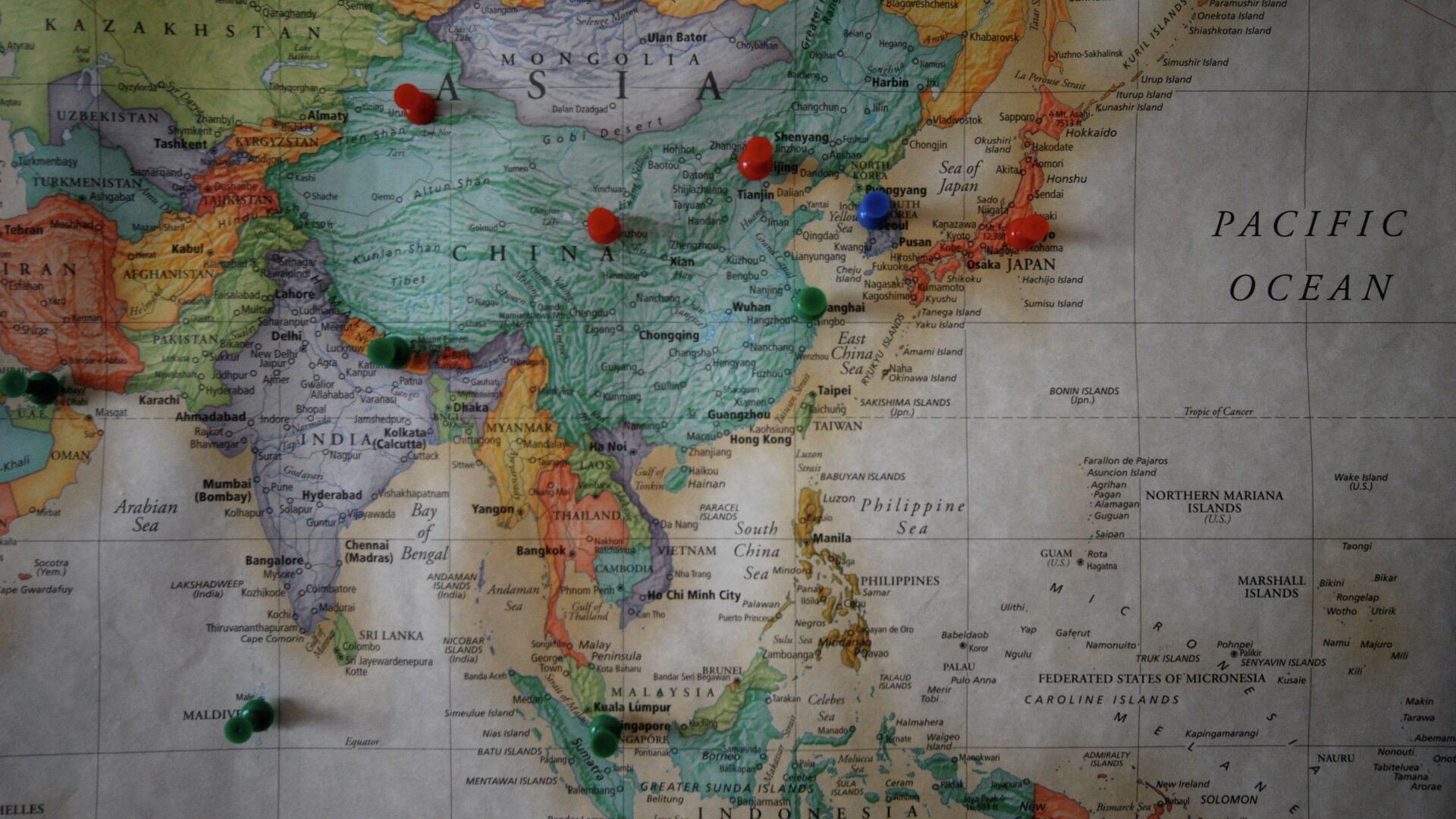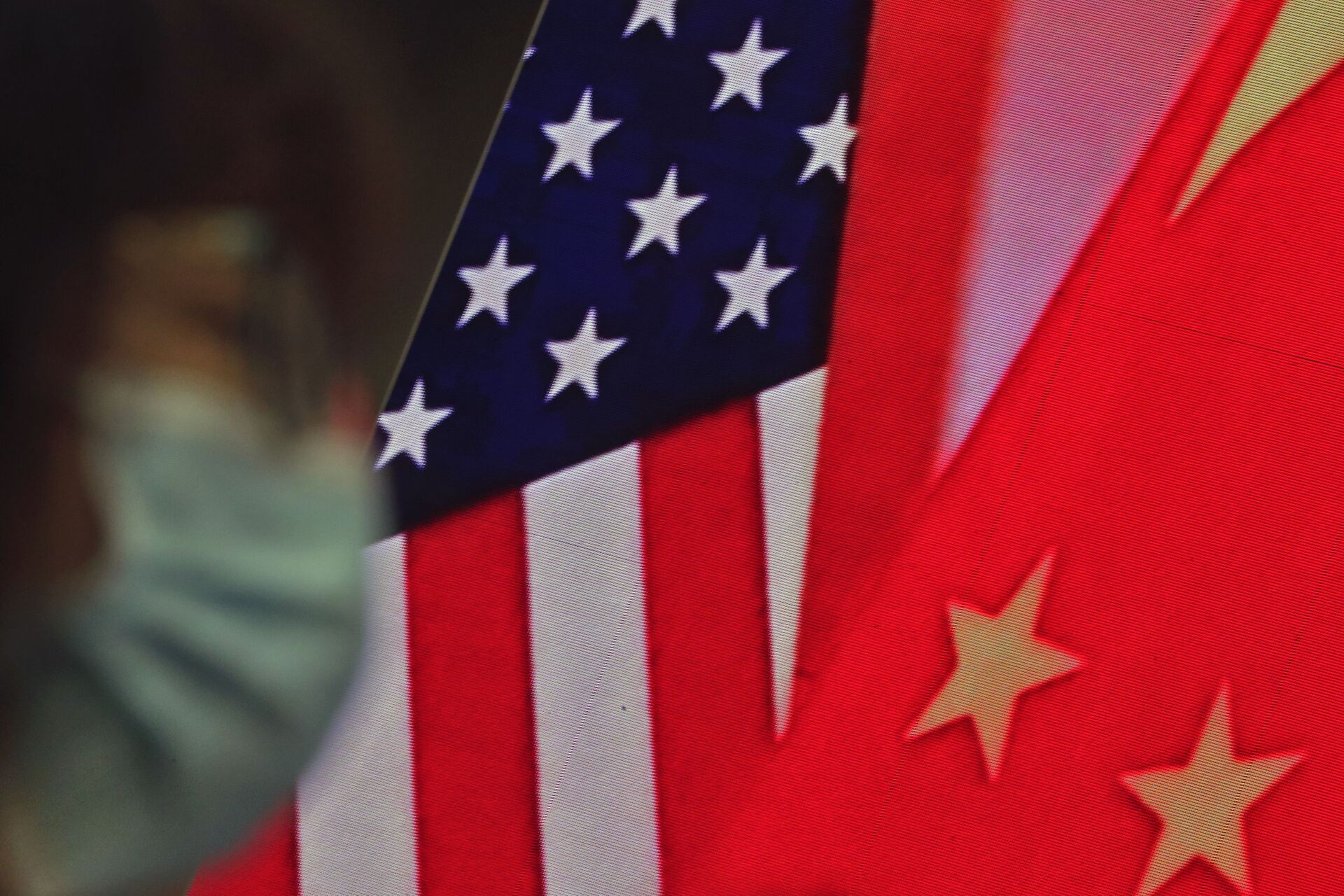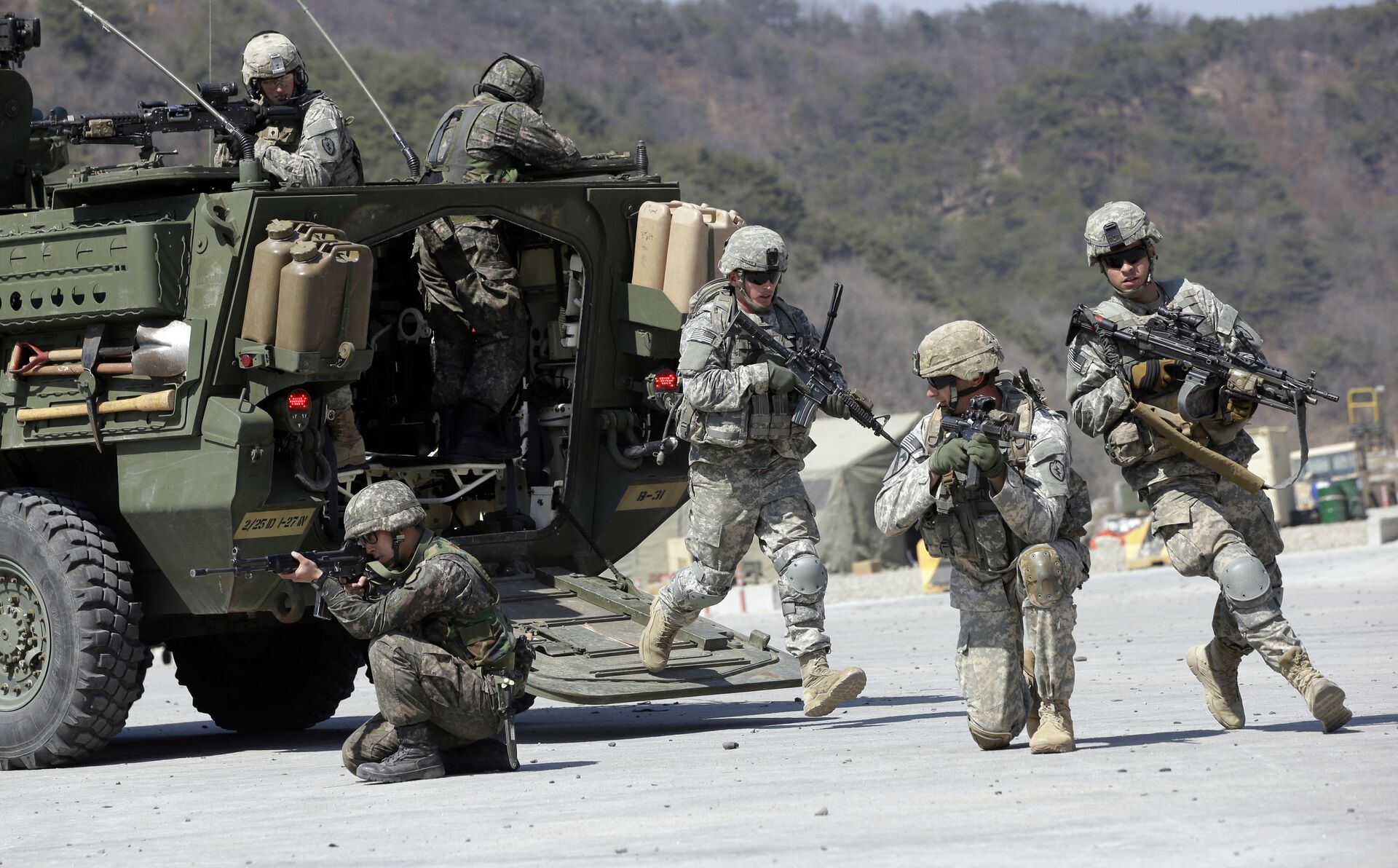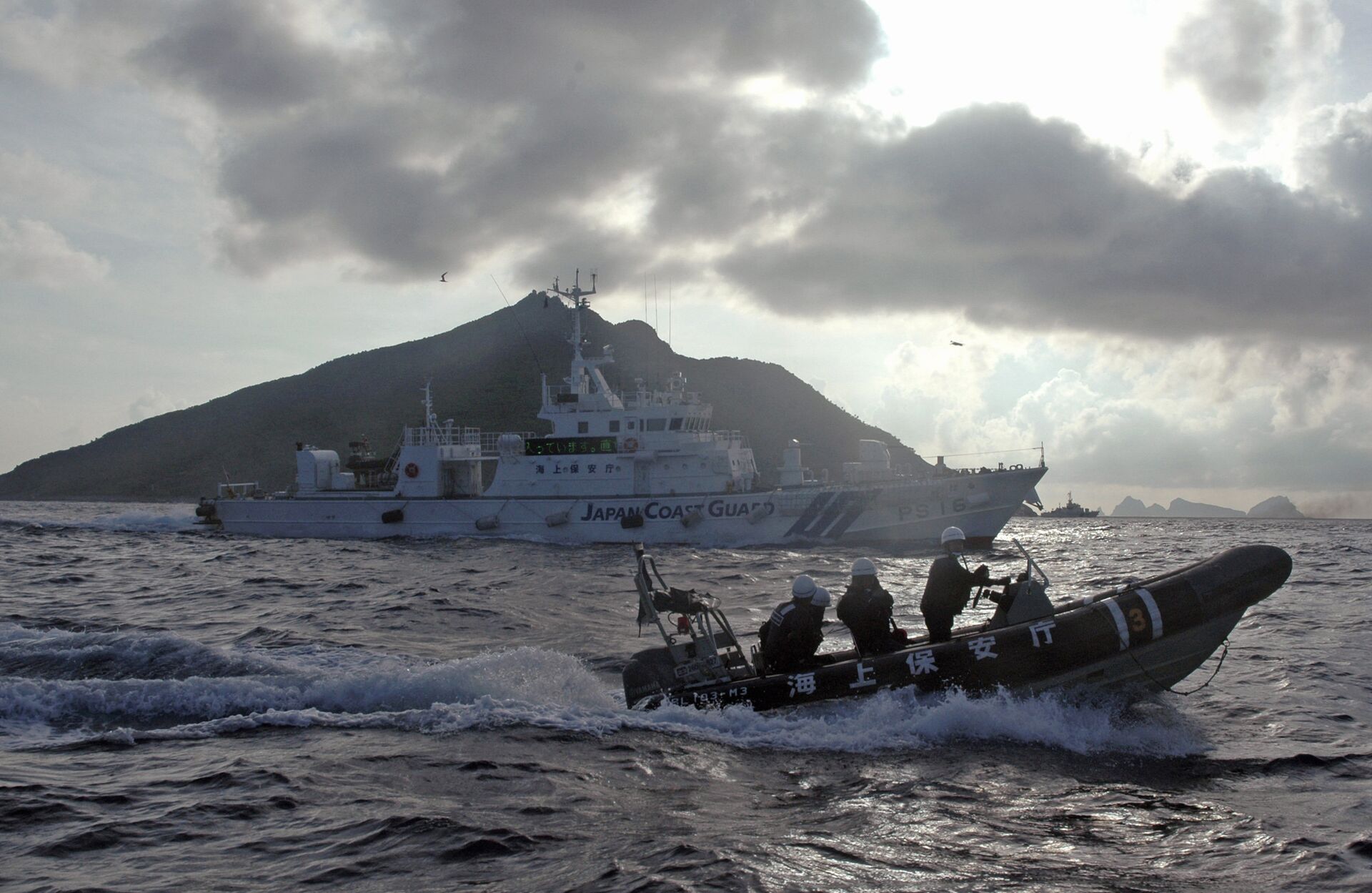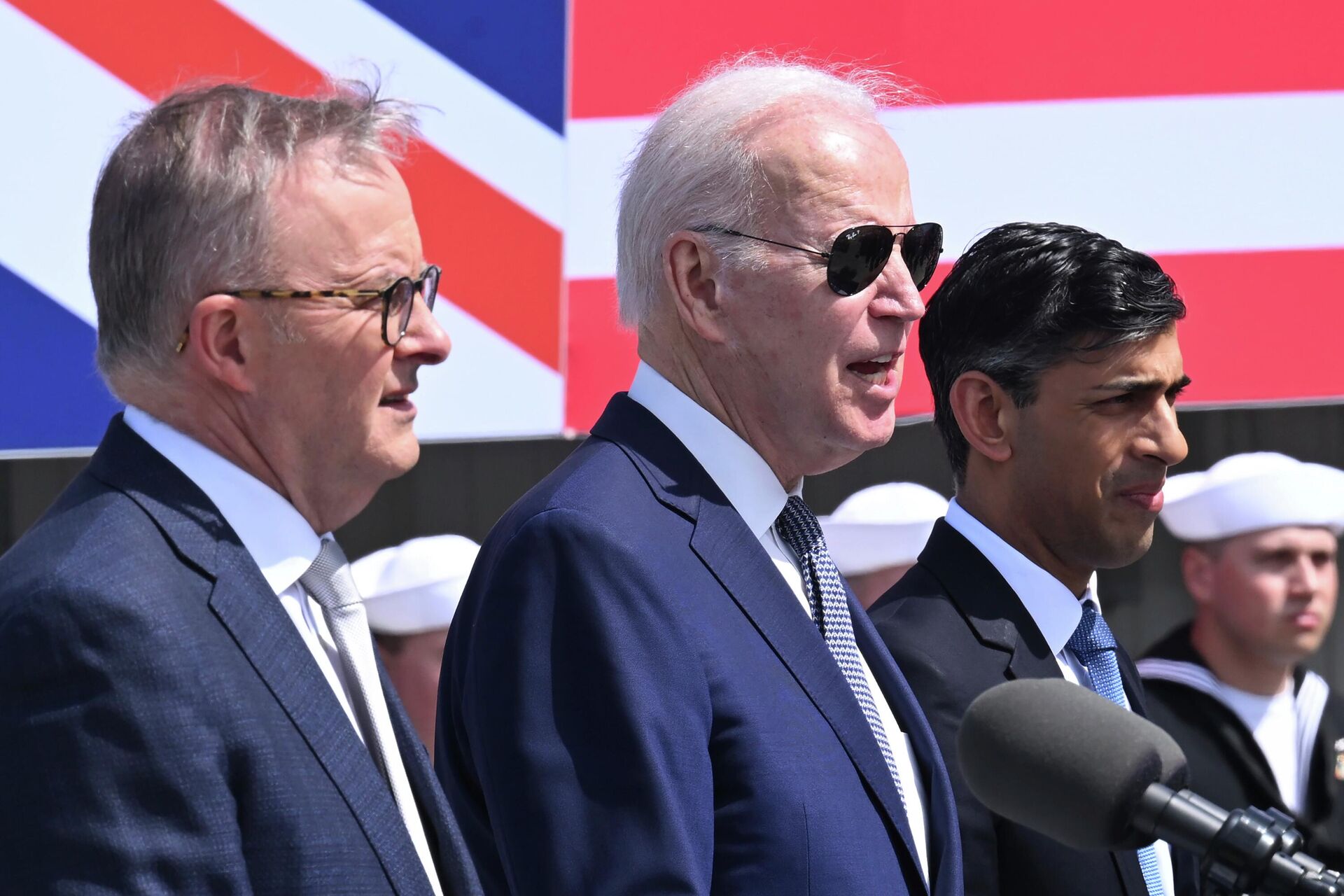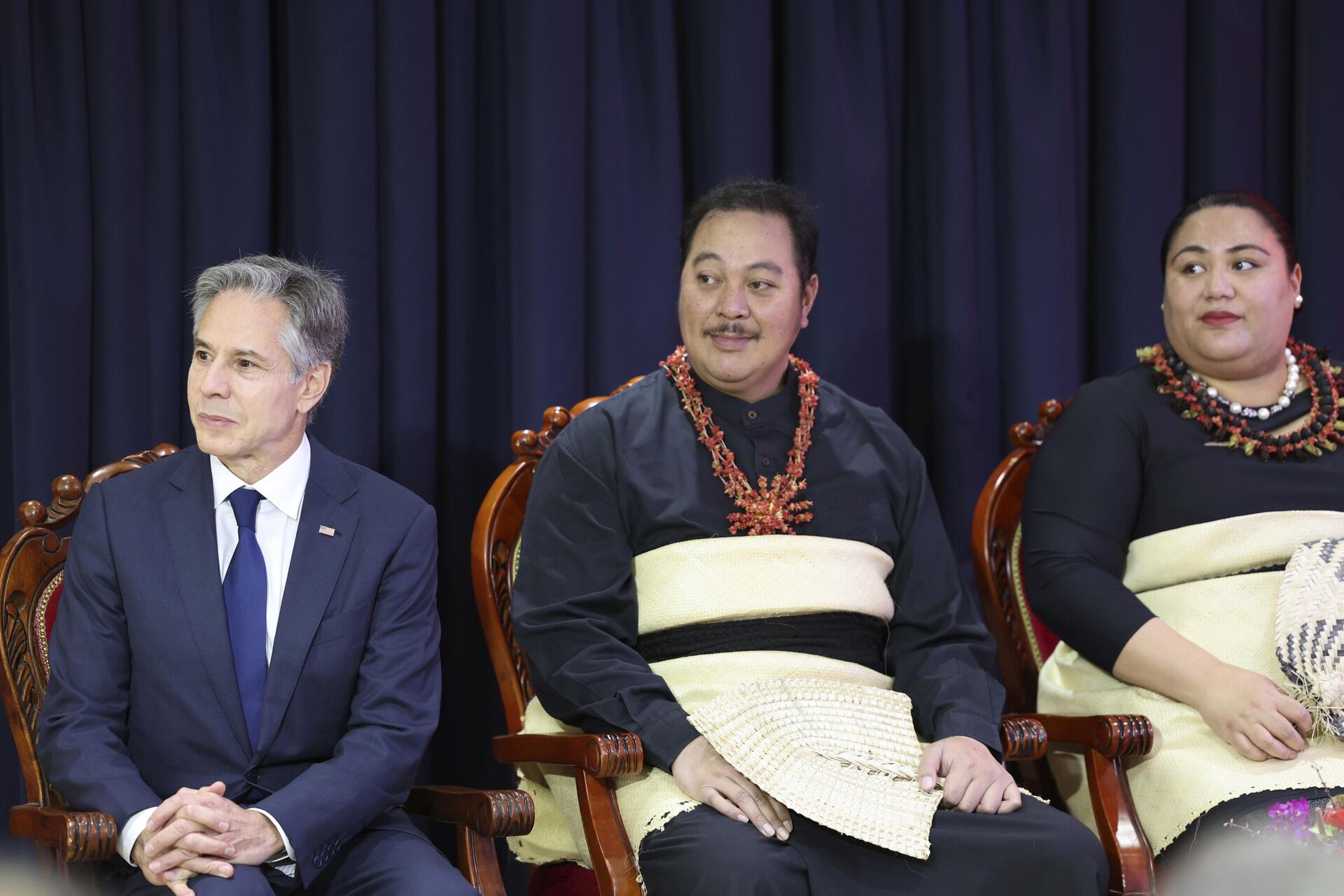https://sputnikglobe.com/20231226/2023-in-review-how-us-pushed-deeper-into-asia-while-focus-was-on-ukraine--israel-1115825784.html
2023 in Review: How US Pushed Deeper Into Asia While Focus Was on Ukraine & Israel
2023 in Review: How US Pushed Deeper Into Asia While Focus Was on Ukraine & Israel
Sputnik International
From deals with enemies-turned-emerging powers to wooing island nations, the US worked hard in 2023 to improve its stance in the “Indo-Pacific” region against what it claims is a Sino-Russian effort to dislodge it as world leader.
2023-12-26T22:36+0000
2023-12-26T22:36+0000
2023-12-26T22:32+0000
asia
2023 year in review
asia-pacific region
pivot to asia
singapore
philippines
taiwan
china
aukus
pentagon
https://cdn1.img.sputnikglobe.com/img/102174/68/1021746817_0:207:3872:2385_1920x0_80_0_0_284341d920d381eb6f9dbe1ad5bd6d50.jpg
Speaking to Singaporean Prime Minister Lee Hsien Loong in August, Chinese Foreign Minister Wang Yi warned the United States “has become the biggest destabilizing factor in the world.”While the world was distracted by the US-backed conflicts in Ukraine and Israel in 2023, Washington was quietly bolstering its military presence in Asia, which it calls the “Indo-Pacific” and considers to be a key theater for “great power competition” against Russia and China.The US has accused both nations of seeking to overturn what it calls the “rules-based international order,” referring to the post-World War II global order in which the US calls the shots politically, socio-economically, and militarily.In East and Southeast Asia, the US sought to pry nations away from their partnerships with Beijing and Moscow by casting them as threats to sovereignty that only a military showdown can deter, and to either sell them weapons or place military assets there.Here are some of the ways the US has enhanced its military presence in Asia over the past year:New Bases in the PhilippinesIn February, Washington and Manila penned a new Enhanced Defense Cooperation Agreement and in April, Philippine President Ferdinand Marcos, Jr. approved the use of four Philippine military bases by US forces.The sites are Naval Base Camilo Osias in Santa Ana, Cagayan; Camp Melchor Dela Cruz in Gamu, Isabela; Balabac Island in Palawan; and Lal-lo Airport in Cagayan. Those four are in addition to five other US military bases in the Philippines.However, the US forces stationed there will be “rotational,” meaning their stationing is not permanent, although the overall US presence is. The Pentagon said the new sites would be for joint training and would “improve regional readiness,” although Marcos denied the US would be able to use the bases for offensive purposes.Washington and Manila have had a mutual defense treaty since 1951 and their troops regularly drill together. Following the new agreement, this year’s Balikatan joint war games were the largest in decades, which the US says are key to preserving the “peace and stability of the Indo-Pacific Region.”While Marcos is far more pro-US than his predecessor, Rodrigo Duterte, Manila is still plotting a careful balancing act between Washington and Beijing. Despite welcoming more US troops and penning a nuclear power cooperation agreement with the US, Marcos has also pushed ahead on the Code of Conduct for the South China Sea, a peaceful solution preferred by Beijing to the increasingly dangerous quarrels over islands and waterways in the South China Sea.Arming & Training TaiwanJoint training has also been used to bring more US forces into the region in Taiwan, a Chinese island province ruled by the former Republic of China government, which is hostile to Beijing and only recognized by a handful of countries around the world - ironically, the US is not officially one of them.Gaffe-prone US President Joe Biden has also let the cat out of the bag with repeated statements that the US would defend Taiwan in the event of a Chinese attack, despite a decades-long policy of “strategic ambiguity” on the question designed to preserve the status quo by not encouraging either side to act.There has been some frustration for the US, however, as the Philippines has refused to allow the US to store weapons on Philippine bases that are intended for Taiwan.In February, reports in US media indicated several hundred US troops would likely soon be sent to Taiwan to train Taiwanese military units, which Chinese state media referred to as “playing with fire.” The US has also welcomed hundreds of Taiwanese soldiers for training on US soil as well.Taiwan managed to break through the Ukraine-Israel news dominance in early December, when the National Defense Authorization Act (NDAA), the Pentagon’s massive annual budget bill, was temporarily stalled amid a debate about funding for Kiev. The bill was eventually passed and included tens of billions for Kiev and Jerusalem, and also set aside money for Taiwan - that’s on top of a $2 billion-a-year stipend over the next five years that was approved in last year’s NDAA.New Partnerships With South Korea, JapanSeoul and Japan have been US allies since the 1950s, each hosting tens of thousands of US troops at numerous bases. However, Washington pushed both nations to deepen their cooperation even further in 2023, building new connections to the NATO alliance in Europe and North America.NATO upgraded Japan and South Korea, as well as Australia and New Zealand, to a new category of Individually Tailored Partnership Program (ITPP), deepening their cooperation on collaboration on cybersecurity, space, and fighting disinformation, among other things. NATO also opened a liaison office in Japan, a country that is constitutionally neutral.In addition, South Korea agreed to host more US forces and to conduct more exercises with US forces and others in the region, including live-fire exercises, and the US and Japan announced a joint effort to develop hypersonic weapons interceptors.However, much like with the Philippines, China has responded to aggressive American moves by extending a peaceful hand. In May, the Chinese and Japanese defense ministers inaugurated a new open hotline to “strengthen the capabilities of the two sides in managing and controlling maritime and air crises, and help further safeguard regional peace and stability,” according to a joint statement.The two nations have competing claims over several small islands in the East China Sea that Tokyo calls the Senkakus and China calls Diaoyu Dao.Pushing AUKUS AheadThe Australia-United Kingdom-United States (AUKUS) bloc was announced in September 2021, revealing a new part of Washington’s anti-China network-building in South Asia and the Pacific. The “trilateral security partnership” is aimed at sharing advanced British and American weaponry with Australia, most especially nuclear-powered submarines and hypersonic missiles, but also cyber, artificial intelligence, and quantum technologies.The deal was a shock to many nations, not the least of which was France, which suffered a major loss when Canberra canceled its deal to buy French-made diesel-electric submarines in exchange for the American Virginia-class nuclear-powered subs.In 2023, the partnership was pushed ahead, with Biden, UK Prime Minister Rishi Sunak, and Australian Prime Minister Anthony Albanese revealing more details about a joint SSN AUKUS program with American and British parts, which would be built for Australia after the completed sale of between three and five Virginia-class nuclear submarines.Weapons deals also flourished, with Canberra buying up hundreds of long-range Tomahawk cruise missiles from the US, laying plans for joint hypersonic weapons testing in 2024, and the announcement of forthcoming joint intelligence and cloud-based intel-sharing facilities. The US is also slated to open missile manufacturing facilities in Australia and to deploy another 700 US troops to support the nuclear submarines.However, 2023 also saw something of a thaw in the icy Sino-Australian relationship, with Albanese meeting in Beijing with Chinese President Xi Jinping last month and resuming bilateral exchanges. ‘Playing Catch Up’ in Pacific IslandsIn April, Joseph Yun, the US special envoy for negotiations with Micronesia, Palau and the Marshall Islands, opined that Washington was “playing catch up” with Beijing in the Pacific Islands.While the three island nations to whom Yun serves as envoy are de facto US protectorates without control over their own foreign policy, others, such as the Solomon Islands, have turned decisively toward China, prompting fears of Beijing penetrating in the Pacific beyond the “First Island Chain” off the East Asian coast, which the US sees as the front line for hemming China in.In May, the US and Papua New Guinea signed a new defensive pact that would give the US military access to the country’s airfields and ports, followed by a less comprehensive deal with Australia in December.US Secretary of State Antony Blinken also paid a visit to the small island nation of Tonga in July, which Blinken blatantly stated was aimed at turning Tonga against China by convincing the country that Chinese fishing boats were a threat to its sovereignty.“As China’s engagement in the region has grown, there has been some, from our perspective, increasingly problematic behavior,” Blinken said. However, Tongan Prime Minister Siaosi Sovaleni seemed to remain unphased, rejecting assertions that China was preying on his country with loans or other activities.Second Gentleman Doug Emhoff was also dispatched on a diplomatic mission to New Zealand and Samoa in July, which the White House characterized as helping with its anti-China drive as well.
https://sputnikglobe.com/20231202/philippines-opens-new-monitoring-base-in-south-china-sea-amid-rising-tensions-1115338597.html
https://sputnikglobe.com/20231202/aukus-allies-to-hold-series-of-military-drills-beginning-next-year---pentagon-chief-1115339944.html
singapore
taiwan
china
Sputnik International
feedback@sputniknews.com
+74956456601
MIA „Rossiya Segodnya“
2023
News
en_EN
Sputnik International
feedback@sputniknews.com
+74956456601
MIA „Rossiya Segodnya“
Sputnik International
feedback@sputniknews.com
+74956456601
MIA „Rossiya Segodnya“
how did us spread its influence in asia, what deals did us broker in indo-pacific region in 2023, us efforts to stake partnerships across us, us efforts to clamp down on sino-russian influences
how did us spread its influence in asia, what deals did us broker in indo-pacific region in 2023, us efforts to stake partnerships across us, us efforts to clamp down on sino-russian influences
2023 in Review: How US Pushed Deeper Into Asia While Focus Was on Ukraine & Israel
From partnerships with former enemies-turned emerging powers to bulking up the military of a formally neutral country and wooing tiny island nations, the US worked hard in 2023 to improve its position in the so-called “Indo-Pacific” region against what it claims is a Sino-Russian attempt to dislodge it as world leader.
Speaking to Singaporean Prime Minister Lee Hsien Loong in August, Chinese Foreign Minister
Wang Yi warned the United States
“has become the biggest destabilizing factor in the world.”While the world was distracted by the US-backed conflicts in Ukraine and Israel in 2023, Washington was quietly bolstering its military presence in Asia, which it calls the “Indo-Pacific” and considers to be a key theater for “great power competition” against Russia and China.
The US has accused both nations of seeking to overturn what it calls the “rules-based international order,” referring to the post-World War II global order in which the US calls the shots politically, socio-economically, and militarily.
In East and Southeast Asia, the US sought to pry nations away from their partnerships with Beijing and Moscow by casting them as threats to sovereignty that only a military showdown can deter, and to either sell them weapons or place military assets there.
Here are some of the ways the US has enhanced its military presence in Asia over the past year:
New Bases in the Philippines
In February, Washington and Manila penned a new Enhanced Defense Cooperation Agreement and in April, Philippine President Ferdinand Marcos, Jr.
approved the use of four Philippine military bases by US forces.
The sites are Naval Base Camilo Osias in Santa Ana, Cagayan; Camp Melchor Dela Cruz in Gamu, Isabela; Balabac Island in Palawan; and Lal-lo Airport in Cagayan. Those four are in addition to five other US military bases in the Philippines.
However, the US forces stationed there will be “rotational,” meaning their stationing is not permanent, although the overall US presence is. The Pentagon said the new sites would be for joint training and would “improve regional readiness,” although Marcos denied the US would be able to use the bases for offensive purposes.
“I assured the foreign minister of China these are not intended to be military sites to attack anyone," Marcos told a podcast interview at the Center for Strategic and International Studies (CSIS) in May. "The United States has never brought up the possibility that these sites will be used to attack anybody. That is not the purpose of these sites and this is not the way that they will be used.”
Washington and Manila have had a mutual defense treaty since 1951 and their troops regularly drill together. Following the new agreement, this year’s Balikatan joint war games were the largest in decades, which the US says are key to preserving the “peace and stability of the Indo-Pacific Region.”
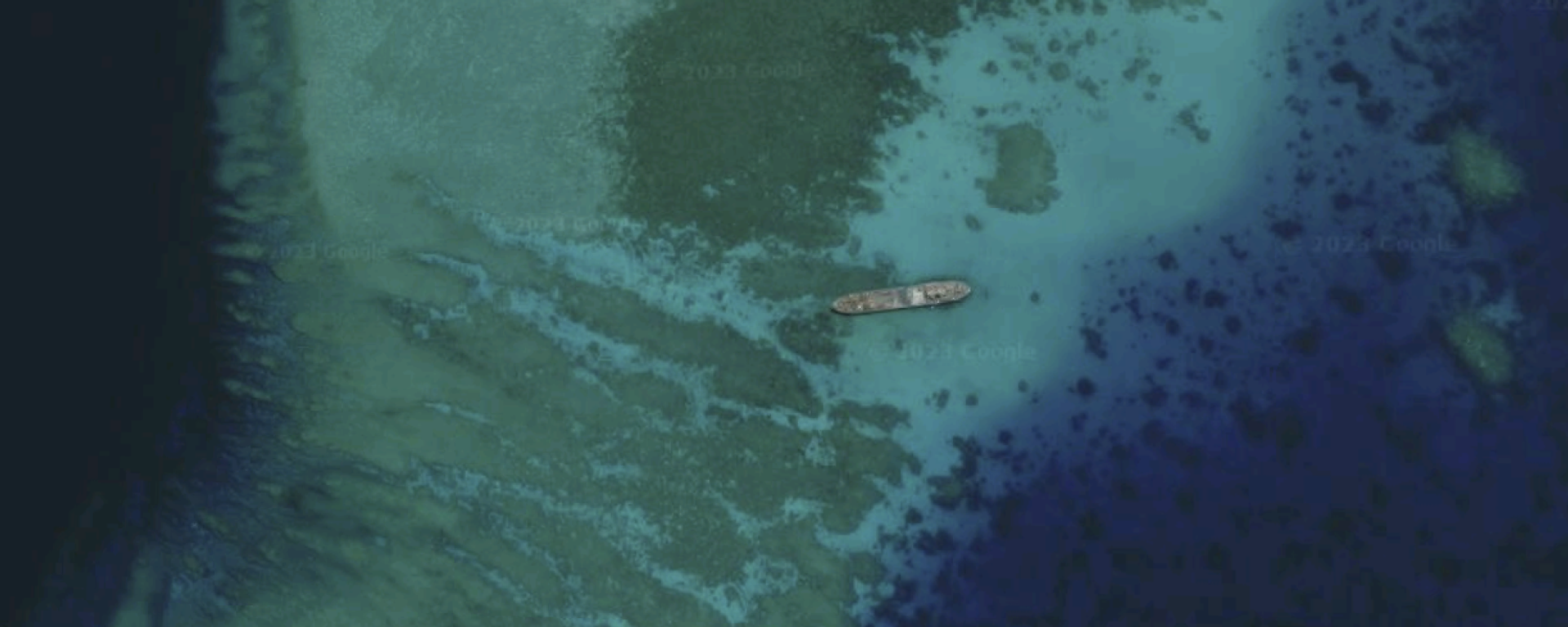
2 December 2023, 00:03 GMT
While Marcos is far more pro-US than his predecessor, Rodrigo Duterte, Manila is still plotting a careful balancing act between Washington and Beijing. Despite welcoming more US troops and penning a nuclear power cooperation agreement with the US, Marcos has
also pushed ahead on the Code of Conduct for the South China Sea, a peaceful solution preferred by Beijing to the increasingly dangerous quarrels over islands and waterways in the South China Sea.
Joint training has also been used to bring more US forces into the region in Taiwan, a Chinese island province ruled by the former Republic of China government, which is hostile to Beijing and only recognized by a handful of countries around the world - ironically, the US is not officially one of them.
Beijing regards Taiwan as Chinese soil and has warned the US not to violate its sovereignty by sending weapons, troops, or even officials to the island.
However, the White House sees defending Taiwan from being forced to reintegrate into China as a cornerstone of its anti-China policy, and 2023 saw even more weapons sales to the small island.
Gaffe-prone US President Joe Biden has also let the cat out of the bag with repeated statements that the US would defend Taiwan in the event of a Chinese attack, despite a decades-long policy of “strategic ambiguity” on the question designed to preserve the status quo by not encouraging either side to act.
There has been some frustration for the US, however, as the
Philippines has refused to allow the US to store weapons on Philippine bases that are intended for Taiwan.
In February,
reports in US media indicated several hundred US troops would likely soon be sent to Taiwan to train Taiwanese military units, which Chinese state media referred to as
“playing with fire.” The US has also welcomed hundreds of Taiwanese soldiers for training on US soil as well.
“Usually, plans like this would remain hush-hush … to prevent drawing the ire of the Chinese communists,” a Taiwanese military source anonymously told Chinese media. “But with US-Taiwan relations becoming more solid and US-China rivalry intensifying, sometimes exposure of these activities is done intentionally to show the close cooperation and partnership between the US and Taiwan.”
Taiwan managed to break through the Ukraine-Israel news dominance in early December, when the National Defense Authorization Act (NDAA), the Pentagon’s massive annual budget bill, was temporarily stalled amid a debate about funding for Kiev. The bill was eventually passed and
included tens of billions for Kiev and Jerusalem, and also set aside money for Taiwan - that’s on top of a $2 billion-a-year stipend over the next five years that was approved in last year’s NDAA.
New Partnerships With South Korea, Japan
Seoul and Japan have been US allies since the 1950s, each hosting tens of thousands of US troops at numerous bases. However, Washington pushed both nations to deepen their cooperation even further in 2023, building new connections to the NATO alliance in Europe and North America.
NATO upgraded Japan and South Korea, as well as Australia and New Zealand, to a new category of Individually Tailored Partnership Program (ITPP), deepening their cooperation on collaboration on cybersecurity, space, and fighting disinformation, among other things. NATO also
opened a liaison office in Japan, a country that is constitutionally neutral.
In addition, South Korea agreed to host more US forces and to conduct more exercises with US forces and others in the region, including live-fire exercises, and the US and Japan announced a joint effort to
develop hypersonic weapons interceptors.
However, much like with the Philippines, China has responded to aggressive American moves by extending a peaceful hand. In May, the Chinese and Japanese defense ministers
inaugurated a new open hotline to “strengthen the capabilities of the two sides in managing and controlling maritime and air crises, and help further safeguard regional peace and stability,” according to a joint statement.
The two nations have competing claims over several small islands in the East China Sea that Tokyo calls the Senkakus and China calls Diaoyu Dao.
The Australia-United Kingdom-United States (AUKUS) bloc was announced in September 2021, revealing a new part of Washington’s anti-China network-building in South Asia and the Pacific. The “trilateral security partnership” is aimed at sharing advanced British and American weaponry with Australia, most especially nuclear-powered submarines and hypersonic missiles, but also cyber, artificial intelligence, and quantum technologies.
The deal was a shock to many nations, not the least of which was France, which suffered a major loss when Canberra canceled its deal to buy French-made diesel-electric submarines in exchange for the American Virginia-class nuclear-powered subs.
In 2023, the partnership was pushed ahead, with Biden, UK Prime Minister Rishi Sunak, and Australian Prime Minister Anthony Albanese
revealing more details about a joint SSN AUKUS program with American and British parts, which would be built for Australia after the completed sale of between three and five Virginia-class nuclear submarines.
Weapons deals also flourished, with Canberra buying up hundreds of
long-range Tomahawk cruise missiles from the US, laying plans for
joint hypersonic weapons testing in 2024, and the announcement of forthcoming
joint intelligence and
cloud-based intel-sharing facilities. The US is also slated to open
missile manufacturing facilities in Australia and to deploy another 700 US troops to support the nuclear submarines.
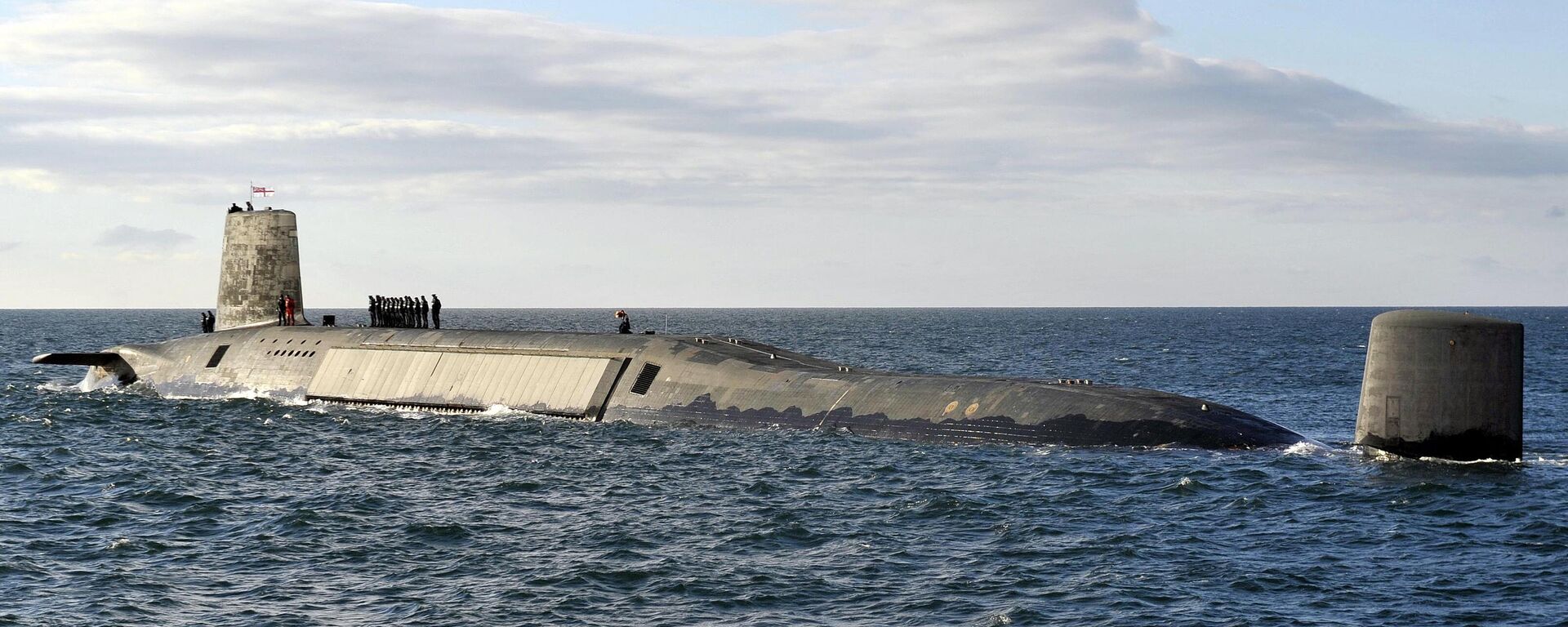
2 December 2023, 09:16 GMT
However, 2023 also saw something of a thaw in the icy Sino-Australian relationship, with
Albanese meeting in Beijing with Chinese President Xi Jinping last month and resuming bilateral exchanges.
The two nations are part of the Regional Comprehensive Economic Partnership (RCEP), the world’s largest free trade bloc, which took effect last year. It includes roughly 30% of the world’s population and 30% of its gross domestic product.
‘Playing Catch Up’ in Pacific Islands
In April, Joseph Yun, the US special envoy for negotiations with Micronesia, Palau and the Marshall Islands, opined that Washington was
“playing catch up” with Beijing in the Pacific Islands.
While the three island nations to whom Yun serves as envoy are de facto US protectorates without control over their own foreign policy, others, such as the Solomon Islands, have turned
decisively toward China, prompting fears of Beijing penetrating in the Pacific beyond the “First Island Chain” off the East Asian coast, which the US sees as the front line for hemming China in.
In May, the US and Papua New Guinea signed a
new defensive pact that would give the US military access to the country’s airfields and ports, followed by a less comprehensive
deal with Australia in December.
US Secretary of State Antony Blinken also paid a visit to the small island nation of Tonga in July, which Blinken blatantly stated was aimed at turning Tonga against China by convincing the country that Chinese fishing boats were a threat to its sovereignty.
“As China’s engagement in the region has grown, there has been some, from our perspective, increasingly problematic behavior,” Blinken said. However, Tongan Prime Minister Siaosi Sovaleni seemed to remain unphased, rejecting assertions that China was preying on his country with loans or other activities.
Second Gentleman Doug Emhoff was also dispatched on a diplomatic mission to New Zealand and Samoa in July, which the White House characterized as helping with its anti-China drive as well.
